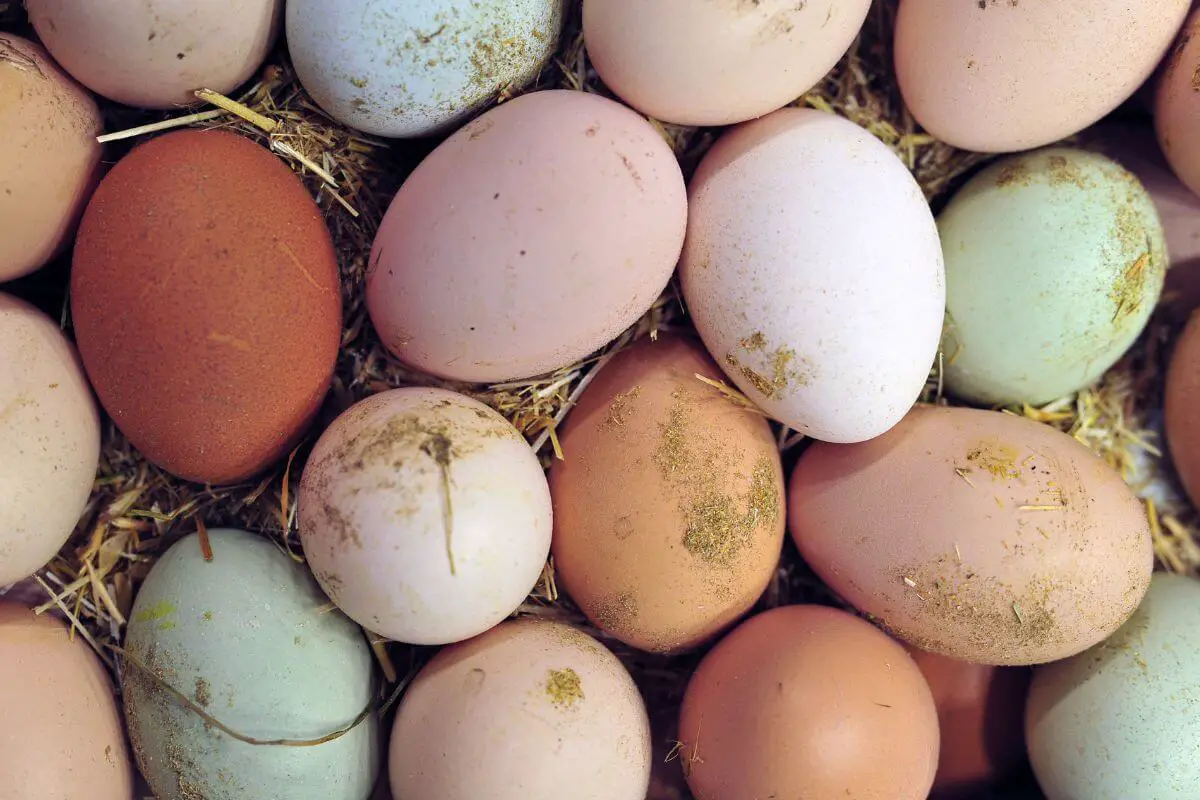There are multiple chicken breeds that lay colored eggs with light shades of blue, green, pink and brown. These breeds include Araucana, Ameraucana, Marans, Cream Legbar, Welsummers, Easter Egger and Penedesenca.
The colored chicken egg market has been steadily rising over the past few years. As a result, today’s chicken breeders are known to stock a variety of breeds because of the different egg colors available.
When selecting chicken breeds to rear, it is essential to recognize that chickens have two simple body kinds. Type A birds are basically about egg production. While they remain top egg layers, they usually are bonier than the Type B birds.
Type B chickens are double-use birds that exhibit both composed and even-tempered characters. They lay eggs, but because they transform more of their intake into weight, they produce less than Type A chickens.
With that said, some of the breeds that can lay chicken-colored eggs include, but are not limited to the following.
Table of Contents
1. Araucana
Araucanas are well-known for the production of blue-colored chicken eggs. It is also widely assumed that this breed originates from Chile. While they have tufts on the back, they usually do not have rumps.
Despite these eye-catching features, low fertility and the amount hatched make keeping these birds challenging.
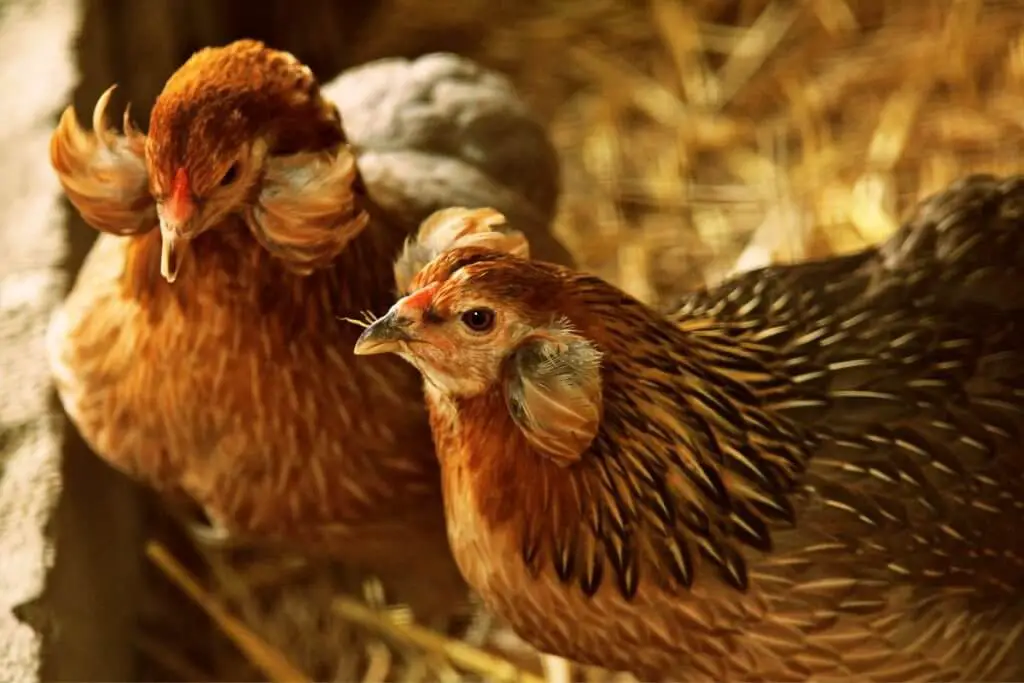
With varying shades of blue, some of the eggs are grayish, green with a blue hue, turquoise blue, and violet-blue. The color they lay is not just a coat; it saturates the whole shell.
Araucana fowls are known to lay many eggs, with one being able to lay 200 beautiful blue eggs on average each year.
2. Ameraucana
Both the Ameraucana and Araucan are believed to be of the same origin, with the latter being a crossbreed. They, too, lay blue eggs just like the Araucana, with their hatchlings typically possessing a cluster of little feathers or furs, taut muffs, and peculiar fuzz.
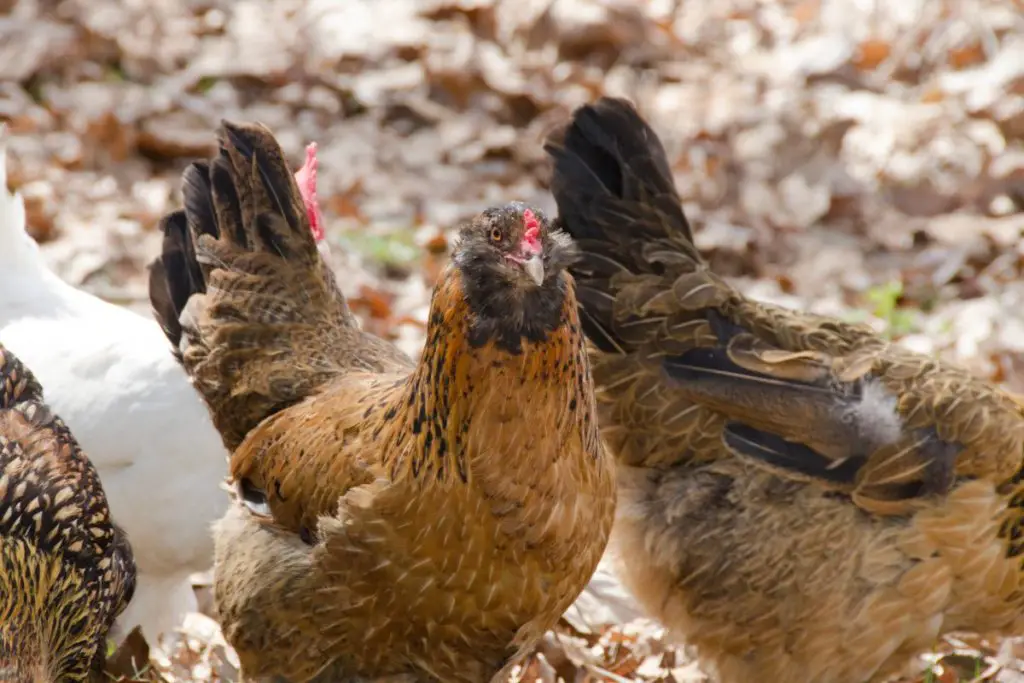
Ameraucanas are outstanding layers, producing between 150 and 200 medium to giant colored chicken eggs yearly and typically so for the entire year.
Since they showcase some Araucana attributes, these birds are usually inclined towards the body and have several Type B characteristics, such as laying high numbers of eggs. Overall, this breed is the best option if you want to increase the range of qualities in your flock.
3. Marans
Marans are quiet, even-tempered fowls of average size and Type B figure. Despite being a dual-purpose variety, this bird is bred essentially for its eggs.
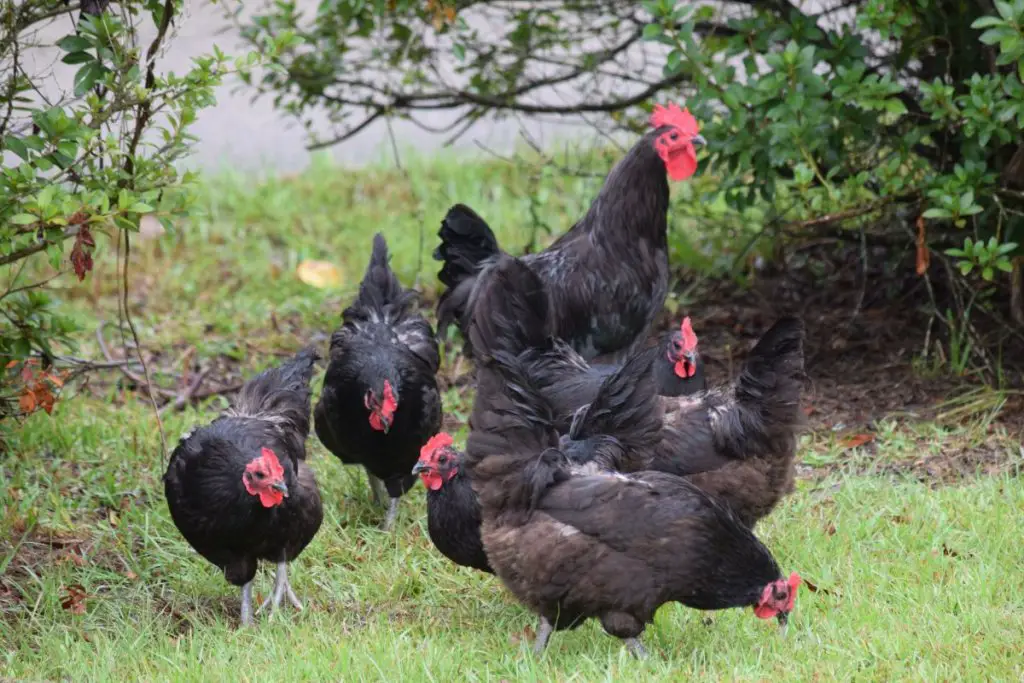
Some of their main features include:
- They produce a considerable number of eggs and lay colored chicken eggs that are lovely chocolate brown.
- Cooks regard Maran eggs to be amongst the best in the world. Yearly, they lay between 150 and 200 eggs.
- Marans are unlike other colorful chicken egg suppliers in that the specific tone differs based on the single bird. The eggs laid by an older chicken will be lighter than those by a younger one.
On the other hand, if you desire mostly dark eggs, the production amount may be considerably lower.
4. Cream Legbar
Cream Legbars are a reasonably new 20th-century chicken breed formed by scientists at Cambridge University. These researchers crossed Leghorns, Barred Plymouth Rocks, and Cambars with Araucanas to produce a succeeding kind of blue egg layer that eradicated the domineering Araucana gene.
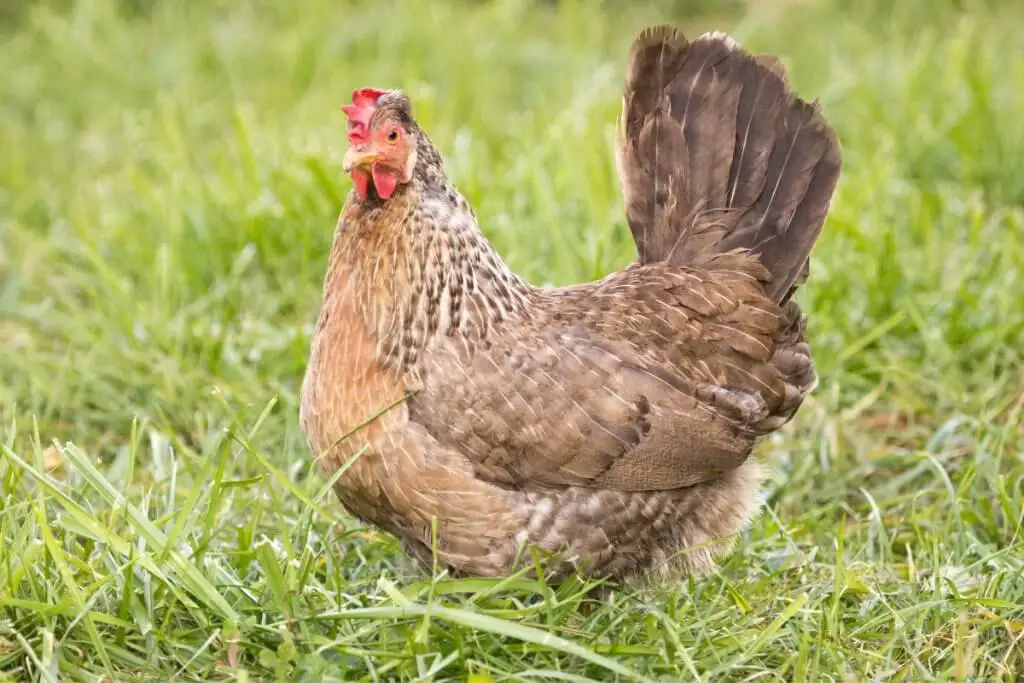
These chickens have cream-colored feathers, from where they derive the name Cream Legbar. Moreover, they also showcase different physical features from Ameraucanas, Araucanas, and Easter Eggers.
Cream Legbars are productive layers, laying an average of 4 medium-sized blue-colored chicken eggs weekly, or about 230 eggs yearly.
5. Welsummers
Native to Holland, the Welsummer is a docile and the cleverest chicken breed. The breed has only been around for slightly over a century.

One of the unique things about the coloring of a Welsummer’s egg is that it’s not only a deep chocolate brown in hue, but it can also have flecks.
The amount of colored chicken eggs it produces yearly differs significantly, going from 160 to 250 eggs. These chickens lay a rich chocolate-brown colored egg that can rub off while washing the eggs if you don’t take proper care.
6. Easter Egger
Any chicken reared with one parent with the genetic factor for blue eggs will prospectively be an Easter Egger. Unlike Ameraucanas or Araucanas, they are designated ‘mutts’ instead of a breed of their own.
These chickens lay about 250 colored chicken eggs annually, and some lay blue eggs. It is however important to note that not all Easter Eggers lay blue eggs.
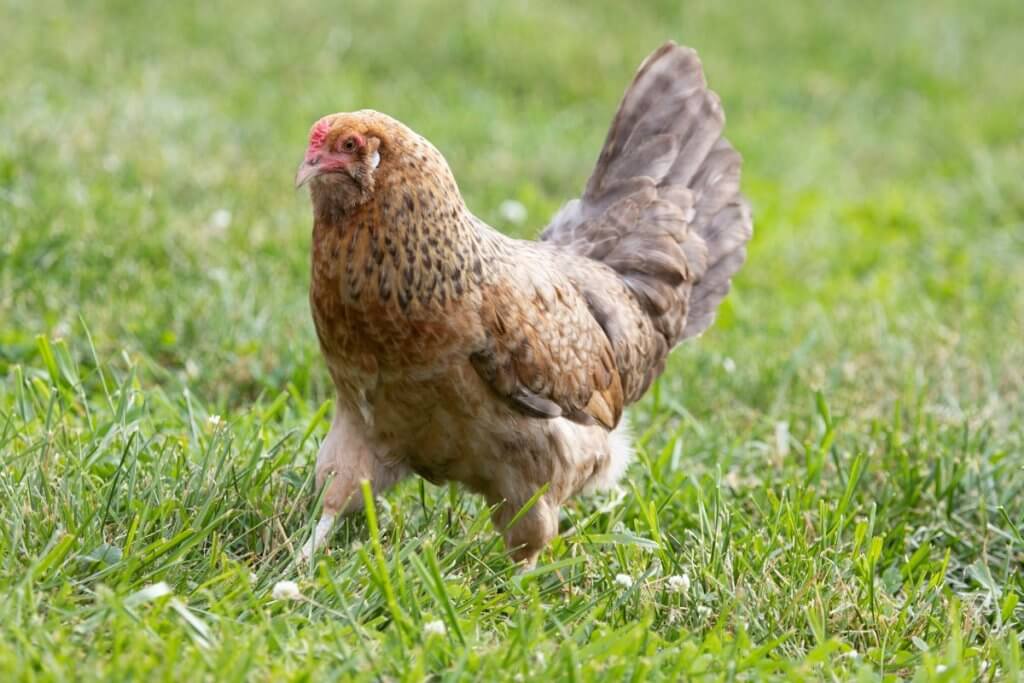
This type of chicken is a crossbreed between a blue egg layer (like Ameraucana) and a brown egg layer (like Plymouth Rock). An Easter Egger chicken can lay blue, green, brown, or pink eggs!
However, every single chicken can only lay one colored chicken egg. If you only want blue eggs, it’s best to stick with Ameraucana, Araucanas, or Cream Legbars.
7. Penedesenca
The Penedesenca Breed originated from the Catalonia region of Spain around the first quarter of the 1990s.
Developed from native barnyard chickens, this rare breed of chicken has only been available in the US since the mid-20th century. This means that you will need to put in a lot of effort to access these birds.
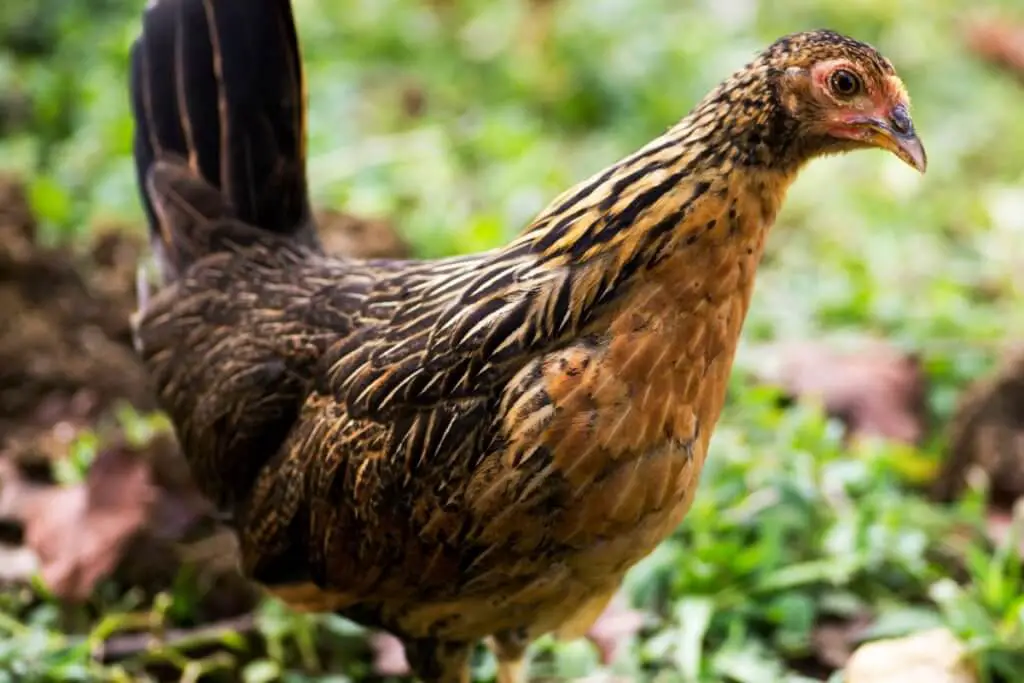
This breed lays some of the darkest eggs when it comes to chicken egg colors. They also lay about 4 eggs weekly, and each hen can lay about 200 annually.
Moreover, one should remember that managing the Penedesenca can be challenging as an ordinary backyard chicken because of how restless these birds can be.
In Summary
Undoubtedly, possessing a basket of colored chicken eggs can be lovely.
Several people are engrossed in raising chicken breeds that lay colored eggs. Many of them are just curious, whereas others do want to make a trade with it.
Most of the best egg-laying chicken breeds don’t lay colorful eggs; top layer types like the White Leghorn lay simple white eggs.
You should consider that a green egg tastes just like a white egg at the end of the day.
However, if you desire a spectrum of colors in your egg basket, these chicken breeds can help you attain your objectives.

